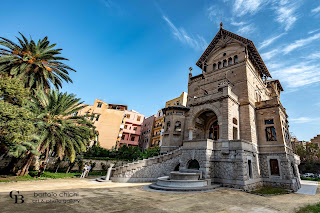Artigiani Siciliani - Sicilian craftsmen - L'intrecciatore di vimini - The Wickler Weaver
Oggi parliamo dell’antico mestiere dell’intrecciatore vimini, mestiere tipico delle zone rurali siciliane, dalle origini antichissime.
Probabilmente la produzione di cesti di vimini è la produzione artigianale più antica conosciuta all’uomo, già dal neolitico; molte testimonianze risalgono ai Greci e ai Romani, che costruivano cesti, recipienti e sedili in vimini. Nel Medioevo si formarono delle corporazioni di quest’arte e fino al secolo scorso il vimini costituì, anche fuori dal campo dell’artigianato, una vera e propria industria specializzata. Nella cultura contadina l’arte viminale in realtà consisteva in un vero e proprio lavoro da svolgere nei periodi di disoccupazione stagionale, una fonte di reddito quando il lavoro in campagna scarseggiava. Soprattutto nei periodi invernali, quando il lavoro nei campi era rallentato, questi artigiani creavano con il vimini diversi oggetti utili alla vita quotidiana: panieri, seggiole, canestri e contenitori di vario tipo…
Per trovare i cespugli più adatti e i rami migliori per l’intreccio bisognava conoscere il territorio, cercare vicino ai ruscelli e nei terreni argillosi.
Le piante più adatte per l’intreccio sono il salice (vimine o vetica), le canne di bambù, ma anche l’olivo e l’olmo. Questa è un’arte che fonde l’ingegno e la conoscenza del territorio e della natura circostante.
I vimini per essere lavorati devono essere flessibili e adatti alla torsione: infatti nella prima fase della lavorazione servono oggetti adatti a tagliare, battere e forare il vimini, ma la torsione è la fase della lavorazione più importante e va applicata unicamente a mano.
L’arte viminale, come la maggior parte degli antichi mestieri della cultura contadina, rischia oggi di scomparire.
Today we are going to talk about an ancient craft: the wicker weaver, typical craft of Sicilian rural areas, with very ancient origins.
Probably the production of wicker baskets is the most ancient handicraft production known to man, since the Neolithic age; many evidences date back to Greeks and Romans, who built baskets, containers and seats in wicker. In the Middle Ages guilds of this art were formed and until the last century wickerwork constituted, even outside the field of craftsmanship, a real specialized industry. In the peasant culture the wicker art actually consisted in a real job to be carried out during periods of seasonal unemployment, a source of income when work in the countryside was scarce. Especially during the winter periods, when work in the fields was slowed down, these craftsmen created with wicker different objects useful for daily life: baskets, chairs, baskets and containers of various kinds...
In order to find the most suitable bushes and the best branches for weaving, it was necessary to know the territory, to look for them near streams and in clayey soils.
The most suitable plants for weaving are willow (wicker or vetica), bamboo canes, but also olive and elm. This is an art that combines ingenuity and knowledge of the territory and the surrounding nature.
Wicker to be worked must be flexible and suitable for torsion: in fact in the first phase of workmanship suitable objects are needed to cut, beat and pierce the wicker, but the torsion is the most important phase of workmanship and must be applied only by hand.
The art of wickerwork, like most of the ancient crafts of peasant culture, is now in danger of disappearing.




Commenti
Posta un commento